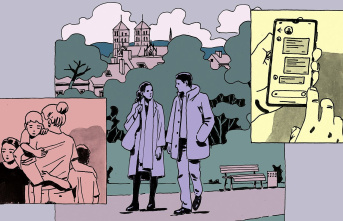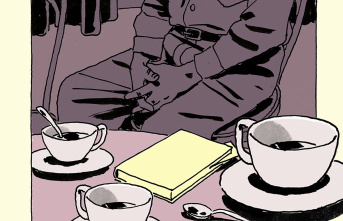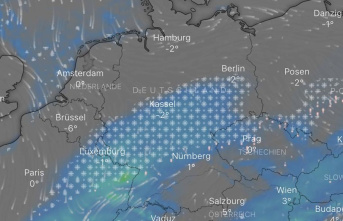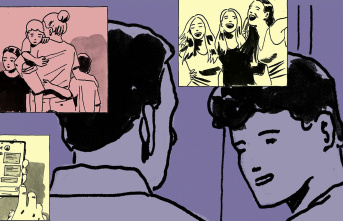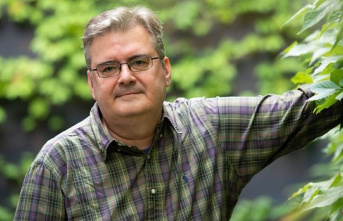The death a few weeks ago of a resident of Betanzos who consumed what was baptized as "the devil's turnip", a toxic species but very frequent and scattered throughout the Galician geography, highlighted the maxim that experience is a degree. And especially when it comes to the field and the species that grow in it, most of them "harmful to humans." The affirmation runs from the hand of Manuel Antonio Rodríguez Guitián, professor of Plant Production at the Lugo campus. The scholar warns that, given the new fashions of returning to life in contact with nature, it is necessary to equip yourself with a backpack of basic knowledge that will help us detect first-level dangers, such as the species that caused the death of a neighbor coming from Colombia and that, precisely because of its origin, might not know its toxicity.
«We are talking about a very typical species of the river banks. It grows where the rainwater takes time to drain, such as Terra Chá or some chairada areas of Carballo, Ordes, Laracha, Mesía, the Verín valley, the Maceda depression... Any situation in which the water pours. It is a plant that likes moist soils and tends to persist where there are river currents, no matter how small", clarifies the expert on its distribution throughout Galician geography. From the parsley family, with similar leaves, but a little larger and more glossy, this plant can exceed a meter and a half in height and once its flowering is over and it dries up at the end of the summer it persists like a dry gray hair for a weather. “The entire plant is itself lethal to the human species. Rural people have known this by culture since ancient times, it is also dangerous for cattle. Before, when the cows were put to graze, they tried to eliminate these plants so that there was no danger, especially for the young calves that do not know it", clarifies the expert, who describes it as "an undesirable plant".
The danger when consuming this apparently innocuous species derives from the fact that a very small amount is enough for the poison to spread rapidly through the bloodstream and affect the entire organism. "We talk about twenty minutes at most," says Rodríguez Guitián in a talk with ABC. “It has some chemical substances that alter the functioning of different bodily organs. It causes effects similar to hemlock, in fact when a person is affected by the infection of this species in the emergency service, it is not very well known how to differentiate, they are fairly rapid intoxications with pain, spasms, nausea, vomiting... It is a poisoning pretty drastic." In addition, ditch the professor, there is no antidote except in very early stages.
But the devil's turnip is not the only poison that the Galician countryside hides. In reality, and contrary to some booming fashions in recent times, on a global scale and of the more than 300,000 species of flowering plants that are described in the world, human beings take advantage of less than a thousand because the rest are toxic. In the case of Galicia, of the 2,500 species mentioned, the vast majority have effects that, if a certain amount of ingestion is exceeded, are negative for humans. Without going any further, even the most common fruit trees pose a health risk.
The seeds of almond, pexego, cherry and stone plants in general are poisonous. "When we open a bag of almonds and one tastes bitter, it is because it has high concentrations of a precursor of cyanhydric acid, with symptoms similar to hemlock," explains Guitián, who calls for trusting the instinct that will make us spit it out to avoid its entry into the organism. «All the seeds that we have on hand in Europe, like an apple pip out of its plastic wrapper, have a bitter taste and are warning us that it is a toxic substance, that we should not consume many more and, if possible, throw it out. ». Contrary to what it may seem to people, most of the wild species in our environment are not harmless to humans, they have some positive effect, such as the infusions of certain types of plants, but they can also have them. negative and even deadly. From the social point of view, there is a certain sense of return to rural life and the natural environment, of harmony with the environment, and that is a very distorted idea of reality in the sense that most living beings and of plants in the natural environment are not particularly beneficial to humans. The fact that it grows in the countryside does not mean that it is healthy, far from it, it is an idea that is totally unfounded”, reflects the teacher about a world that is as close to humans as it is unknown.
Another classic when talking about the traps of the plant environment are mushrooms, a group of living beings that in many cases cause fatal events. "In Galicia almost every year we have deaths, even of entire families, due to eating mushrooms that they do not know and that they misidentify", recalls Guitían, who insists on the idea that both in the plant kingdom and in that of mushrooms "there are to get advice and get together with people experienced and trained in the morphological differentiation of plants».
The displacement of the population towards urban environments and the consequent abandonment of rural areas are behind many of these accidental consumptions. But there is another drift that experts have been warning about for years, and that is the planting of toxic species in cities, in contact with people who, in general, are unaware of their lethality. “Toxic species are planted and the user is not warned that they are just decoration. It happens for example with holly or yew, which produce visually very attractive fruits and there are children who see that a little bird eats them, and they also give them their hands.
The recommendation is that the male be planted and not the female, which is the one that bears fruit, but if the balance is that beautiful things weigh more...». In the case of the yew, reveals Guitián, there are more and more in parks and gardens and for a long time there have been recommendations from organizations and groups asking that there be no females due to the risk of intoxication. In Lugo, he puts for example, there are public gardens, for recreation, loaded with yews "and from time to time we have the misfortune that someone gets intoxicated", he launches as a call to caution before the apparent innocence of the greenery that surrounds us.


